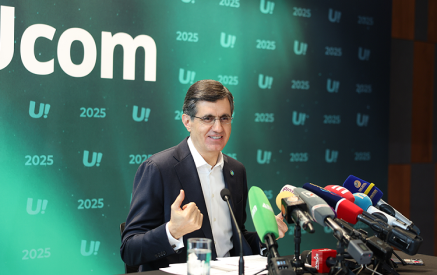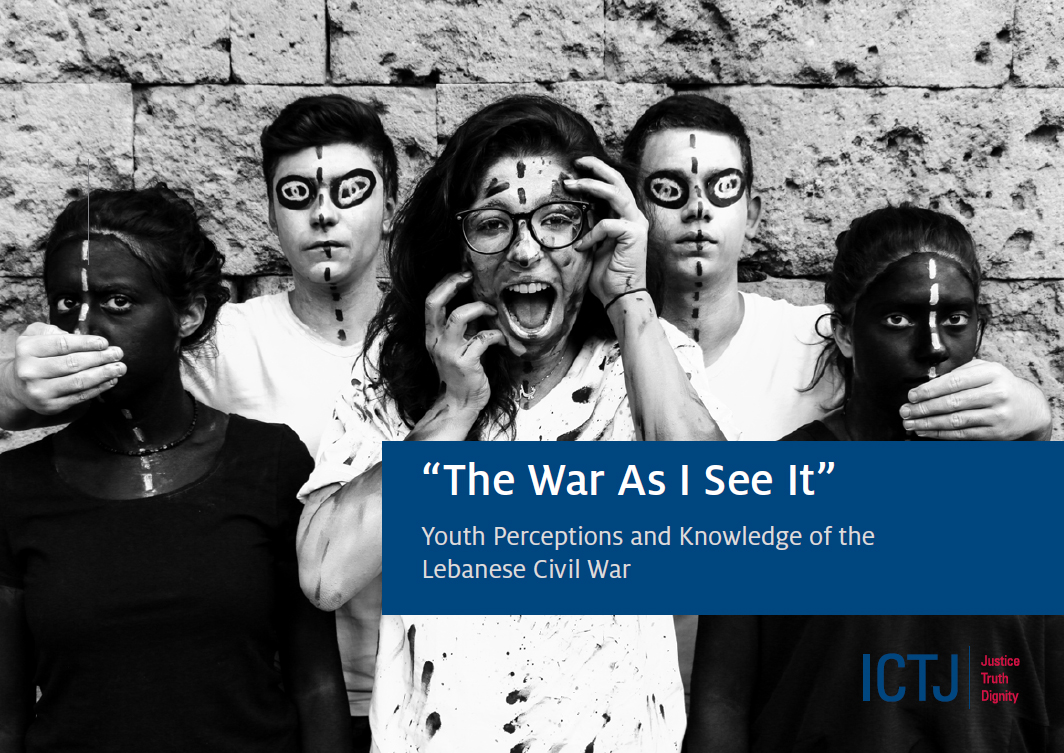A new, photo-filled publication from the International Center for Transitional Justice details how photographs taken by Lebanese young people across the country helped to spark discussion about the disturbing, often-overlooked legacy of the Lebanese civil war. Over the last two years, the photos were part of an arts-based, history-telling project that encouraged Lebanese teenagers and young adults to explore how they understand the civil war as part of the country’s past and present.
The project started when ICTJ asked Lebanese young people aged 15 to 25 to use their cameras to explore their understanding of the war and how it continues to shape the country and people’s lives. The entries, which came from across Lebanon, were powerful testaments of the war’s living legacy.
“The widespread harms caused by the civil war are still visible today, but most people in Lebanon, especially young people, do not know the full history of the war or its impacts,” said Nour El Bejjani Noureddine, manager of the project and author of the publication. “Our photo contest was aimed at raising awareness about the importance of truth seeking and truth telling about people’s memories of the war and to bring different experiences out into the open for constructive discussion.”
The contest’s grand-prize winner was a black-and-white photo of an open book pierced by a single bullet hole, taken by Sibylle George, a 22-year-old architecture student from American University of Beirut. She recounted: “My grandmother’s house is full of objects that have witnessed atrocities committed since 1975, among them, books. This book, titled, Dominique, was only shot once. It’s been lying on the bookshelf in the living room since that day, but no one had dared to open it.”
The five winning photographs and 21 other entries formed part of a photo exhibit that traveled the country, bringing young people from diverse backgrounds and sects together to learn about the civil war and share their perspectives.
The exhibit made weeks-long stops at different cultural and educational locations, including the French Institute in Deir El Qamar, the Byblos Municipality Cultural Center, the Youth and Culture Center of the Zouk Mikael Municipality, Saint Joseph University in Sidon, and Cadmous College in Tyre.
“Even though people in Lebanon often feel pressure not to talk about the war or its many victims, we wanted to challenge young people to show how the war and its lasting harms still affect people today,” said El Bejjani.
According to the publication, most of the teenagers and young adults who participated in the project had limited knowledge of the war, how it had started and ended and who had been affected. Most of what they knew had been passed down to them by their parents or neighbors – and were therefore often biased toward their own social group.
“Because there is no official history of the war and there has been no truth telling, different social and political factions have filled the void with narrow, one-sided stories, which is dangerous for a country still dealing with decades of political violence,” said Fernando Travesí, Executive Director of ICTJ. “The public has no satisfactory answers as to what happened during the war– and no common understanding of the toll it took on different groups and that truly all groups suffered.”
The publication calls on the Lebanese government to develop a common national history curriculum that includes lessons on the civil war. It also calls on schools and nonprofits to provide the post-war generation with unbiased information and facts about the war and the repercussions of political violence.
“Projects like ours that promote peace and discussions about the danger of sectarian violence are needed now more than ever,” said El Bejjani. “Educating young people about the past is key to undoing some of the harmful myths of the war and preventing sectarian violence from happening again.”
The winning photos were selected by a jury of photographers, diplomats, and members of civil society. The five winning photographers received free photography courses from the Nikon School Lebanon.
The project was organized by ICTJ in collaboration with the Embassy of Switzerland in Lebanon, the Embassy of France in Lebanon, the French Institute in Lebanon, the French Institute for the Near-East, and the Political Science Institute at Saint-Joseph University.
The 26 photos that toured Lebanon as part of the “THE WAR AS I SEE IT” Exhibit can be viewed here.




















































